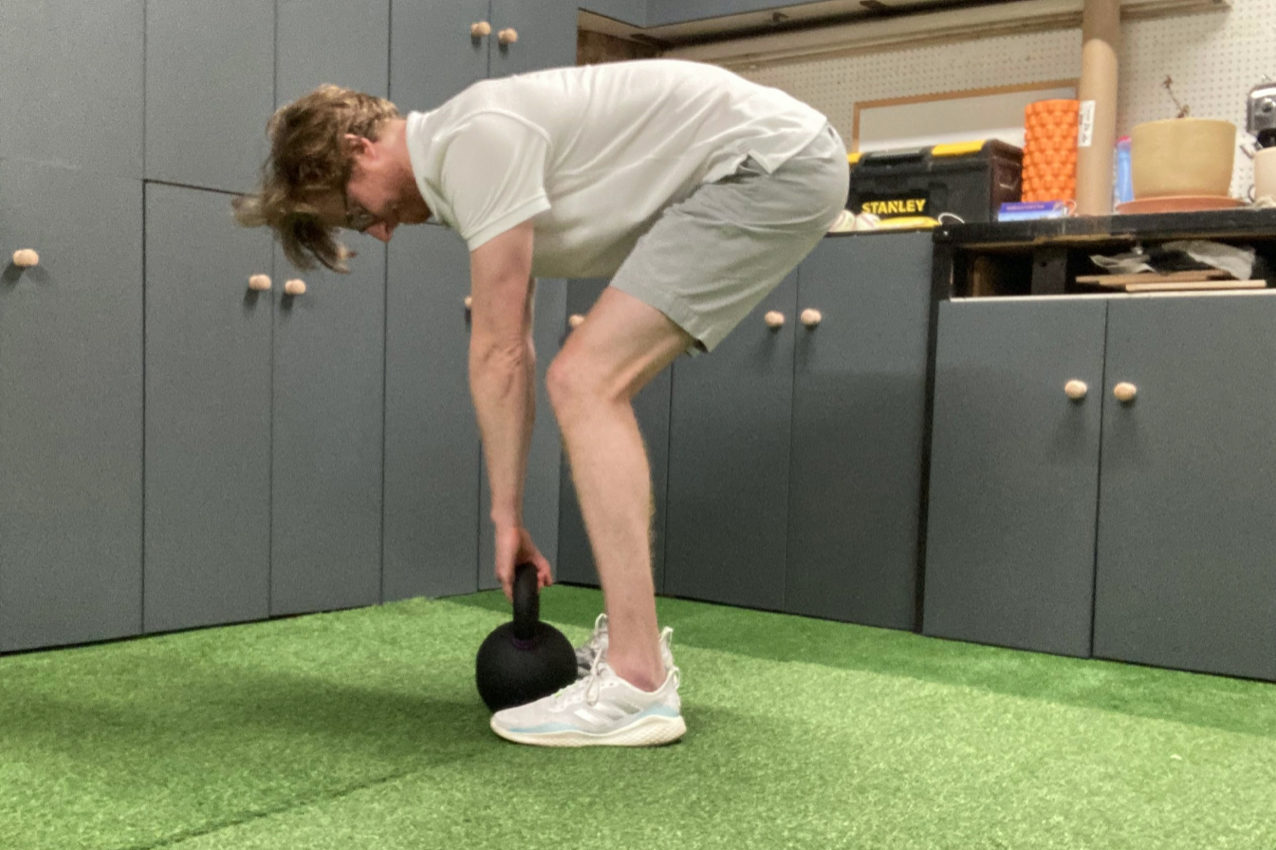3 common kettlebell mistakes athletes should avoid
Jon Hodgkinson from Triathlon Coaching UK explains how to to avoid making these three common mistakes when working out with kettlebells...

When looking for ways to improve your muscular endurance and speed across the three disciplines of tri, it’s generally accepted that you need to incorporate strength training into your weekly training plan, and kettlebells can be a useful tool to help develop your strength. However it is important to avoid these three common mistakes says personal trainer, Jon Hodgkinson, otherwise you risk injury and the exercises will be less effective.
- Why is quad strength important for triathletes?
- Strength training for swimming: 6 key gym exercises
- 3 strength and conditioning exercises to help you stay injury-free
- 4 exercises to build lower body strength
- Strength training: 3 common mistakes triathletes often make (and how to fix them)
- What’s the difference between training for strength and training for endurance?
- The best kettlebells to buy for your home gym
1. Make sure you’re not in an open chain position
Correct technique is an important factor when you start loading up exercises with additional weight and attempt to exert more force and power. The smallest of movement discrepancies will be exposed and you risk injuries occurring. With this in mind, making sure your body is set up in a closed circuit (as shown in the image below) with your spine stable and braced, and hips and shoulders stable is key.

One of the most common mistakes I see is the ‘open circuit’ set up position. Put simply this is often displayed by the body being in a poor position throughout the exercise, with a rounded back and shoulders and hips hiking up into the air (see below).

Not only will this stance put more stress on the vertebrae of the spine and risk injury, it also means that due to the lack of tension created in muscles, you will generate less force and power when completing a kettlebell swing.
The fix
To fix the issue try this hip hinge drill that teaches you the body positions of the hips, spine and shoulders so you have the body awareness before moving on to the kettlebell swing.
How to do the hip hinge drill
- Set up with a dowel or broom handle placed in line with your spine, hips and head.
- Soften the knees slightly in to a ¼ squat position with your feet set shoulder width apart.
- Drive your hips backwards, whilst bringing your upper body forwards, keeping the dowel in contact with your hips, spine and head throughout. This should create tension in the glutes and hamstrings.
- Drive your hips back through extending up in to a tall standing position.
- Focus on bracing your abdominals throughout the whole movement.
- When you have this drill moving well, progress onto incorporating a light kettlebell and progressively build up in weight.
2. Don’t let momentum shift your weight forwards
This mistake is often seen in the kettlebell swing when people first start out. The action of a KB swing brings the weight out in front of the body during its arching movement pathway. If you don’t have a solid stance with your feet driving down into the floor, it’s easy for the momentum of this movement to shift your weight forwards into the balls of the feet bringing your heels up from the ground and creating an unstable and uncontrolled movement. This will often lead to over- compensation, with you having to re-establish your foot position and can create issues with load on the spine, which is not ideal.
To fix this issue, focus simply on creating tension through the lower body by “screwing” your feet into the floor and ensuring the KB swing remains a hip-based movement with little involvement from the knees.
Imagine you are stood on two dinner plates, one under each foot, the “screwing” action rotates the plates slightly as you dig into the ground. Done correctly, you’ll feel the thighs tighten up a little and the glutes kick in.
3. Don’t go too heavy too soon
As with any exercise, it is important that you work on developing good technique and adequate range of motion before either adding weight, or increasing the weight you lift. This stands true for all exercises, but more importantly for those that focus on unilateral (single-leg) movements.
If you go too heavy on the single-leg deadlift (sld) and start to round through the spine, then you are losing the emphasis of being able to work on using your glutes and hamstrings to generate hip extension and instead, will be using your back muscles to complete the movement.
The same would be true for the balance aspects of these movements too. Sometimes having a little bit more weight can help as a counter-balance, but there’s a fine line between having enough weight to help you balance and too much weight pulling you off balance. It’s up to you to make sure your technique is good on these movements before increasing weight.
Level 3 personal trainer, Jon Hodgkinson, is resident nutritionist at Triathlon Coaching UK and founder of Real Food Function. He has worked in the health & fitness industry for nearly 15 years and has a Diploma of Intrinsic Biomechanics
Top image by Getty images




